Top 10 Deadliest Animals
You might not think of these cuddly bears as being deadly, but wait until you read what they can do. Inside you'll find some other truly scary creatures, from things so small you'll barely see them to ones so big you can't miss them (but you'll wish you did). Most don't kill very many humans, but they can be incredibly ferocious predators in the wild, and each demands our respect.
Editor's Note: This list, originally published in 2005, was updated in March 2016 to reflect the latest information. The list of bugs, beasts and lethal animals of several kinds, however, hasn't changed one iota.
1. Cape Buffalo

Cape buffalo, which number around 900,000, are a relatively mild species when left alone, preferring to travel in massive herds to graze in early morning and late afternoon hours, or to gather around watering holes to stay hydrated. However, if an individual (or its calf) is threatened or wounded, they become the incarnation of their nickname: Black Death. Reportedly responsible for killing more hunters on the continent than any other creature, these behemoths, which can grow up to nearly six feet tall and weigh close to a ton, circle and stalk their prey before charging at speeds of up to 35 miles per hour. They're even known to continue charging no matter where they're injured and will not hesitate to attack moving vehicles. Suffice to say, you don't want to mess with those horns.
Where to find them: Sub-Saharan Africa, including Kruger National Park in South Africa
2. Cone Snail
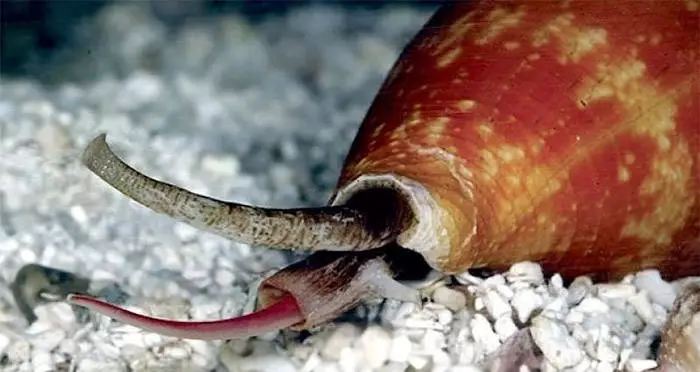
Found in the warm waters in the tropics, these beautiful creatures, instantly recognizable for their highly prized brown-and-white marbled shells, can be seen in shallow depths closer to shore, near coral reefs and rock formations, and beneath sandy shoals. But do not dare to touch the 4- to 6-inch long gastropods: Their concealed, harpoon-like 'teeth' contain a complex venom known as a conotoxin, making them one of the most venomous species of snails. Only a handful of people ever stung, but, quite unfortunately, there is no antivenom. The toxin stops nerve cells from communicating with one another; so the creature not only causes paralysis within moments, but, per its nickname of "cigarette snail," affords you about enough time to smoke a stick before you die.
Where to find them: The Caribbean, Hawaii, and Indonesia
3. Golden Poison Dart Frog

The poison dart is a large, diverse group of brightly colored frogs, of which only a handful of species are particularly dangerous to humans. The most deadly, the golden poison dart, inhabits the small range of rain forests along Colombia's Pacific coast, and grows to around two inches long (roughly the size of a paper clip). Its poison, called batrachotoxin, is so potent that there's enough in one frog to kill ten grown men, with only two micrograms, roughly the amount that would fit onto the head of a pin, needed to kill a single individual. But what makes the amphibian especially dangerous is that its poison glands are located beneath its skin, meaning a mere touch will cause trouble. Little wonder the indigenous Ember, people have laced the tips of their blow darts used for hunting with the frog's toxin for centuries. Sadly, deforestation has landed the frog on several endangered lists, but even if you do have a rare sighting when hiking, don't go reaching for it.
Where to find them: Northern South America
4. Box Jellyfish

Often found floating (or slowly moving at speeds close to five miles per hour) in Indo-Pacific waters, these transparent, nearly invisible invertebrates are considered by the National Oceanic and Atmospheric Administration as the most venomous marine animal in the world. Their namesake cubic frames contain up to 15 tentacles at the corners, with each growing as much as 10 feet long, all lined with thousands of stinging cells, known as nematocysts, that contain toxins that simultaneously attack the heart, nervous system, and skin cells. While antivenoms do exist, the venom is so potent and overwhelming that many human victims, of the hundreds of reported fatal encounters each year, have been known to go into shock and drown or die of heart failure before reaching shore. Even if you are lucky enough to make it to the hospital and receive the antidote, survivors can sometimes experience considerable pain for weeks afterward, and bear nasty scars from the creature's tentacles.
Where to find them: Off the northern coast of Australia
5. Indian Saw-Scaled Viper

While plenty of snake species pack enough venom to easily bring down a human, not all of them take the multifaceted approach of the Indian saw-scaled viper, which is why they are one of the top contributors to snakebite cases. Sometimes called the little Indian viper or simply the saw-scaled viper, these reptiles live in some of the most populated regions of the range they occupy, which stretches well beyond India. They remain inconspicuous by using their natural camouflage to blend into desert surrounds. Because they are typically active at night, it's best to listen for their defensive sizzling sound; this comes from a behavior called stridulation, in which the snake forms coils and rubs its scales together. Even with a warning, saw-scaled vipers are extremely aggressive, with more than double a lethal dose into each bite. (Luckily, there is an effective antivenom.)
Where to find them: Parts of the Middle East, Central Asia, and the Indian subcontinent
6. Pufferfish

Pufferfish, also known as blowfish, are located in tropical seas around the globe. Though they're the second most poisonous vertebrate on the planet (after the golden arrow dart frog), they're arguably more dangerous as their neurotoxin (called tetrodotoxin) is found in the fish's skin, muscle tissue, liver, kidneys, and gonads, all of which must be avoided when preparing the creature for human consumption. Indeed, while wild encounters are certainly dangerous, the risk of death from a pufferfish increases when eating it in countries like Japan, where it is considered a delicacy known as fugu and can only be prepared by trained, licensed chefs, even then, accidental deaths from ingestion occur several times each year. The tetrodotoxin is up to 1,200 times more poisonous than that of cyanide, and can cause deadening of the tongue and lips, dizziness, vomiting, arrhythmia, difficulty breathing, muscle paralysis, and, if left untreated, death.
Where to find them: Around Japan, China, and the Philippines
7. Black Mamba
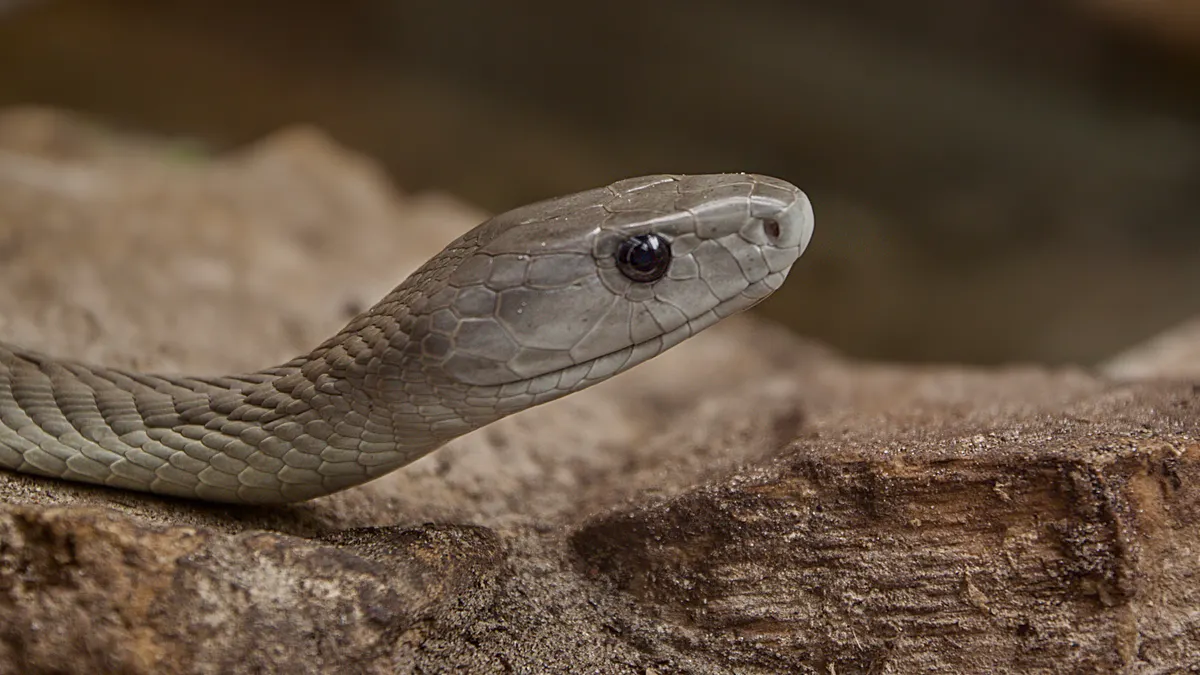
Though species like the boomslang or the king cobra are dangerous thanks to their respective poisons, the black mamba is especially deadly due to its speed. The species (which can grow up to 14 feet long) is the fastest of all snakes, slithering at speeds of up to 12.5 miles per hour, which makes escaping one in remote areas that much more difficult. Thankfully, black mambas usually only strike when threatened, but when they do, they'll bite repeatedly, delivering enough venom (a blend of neuro- and cardiotoxins) in a single bite to kill ten people. And if one doesn't receive the correlative antivenom within 20 minutes, the bites are almost 100 percent fatal.
Where to find them: The savannas and rocky areas of southern and eastern Africa
8. Sydney Funnel-Web Spider
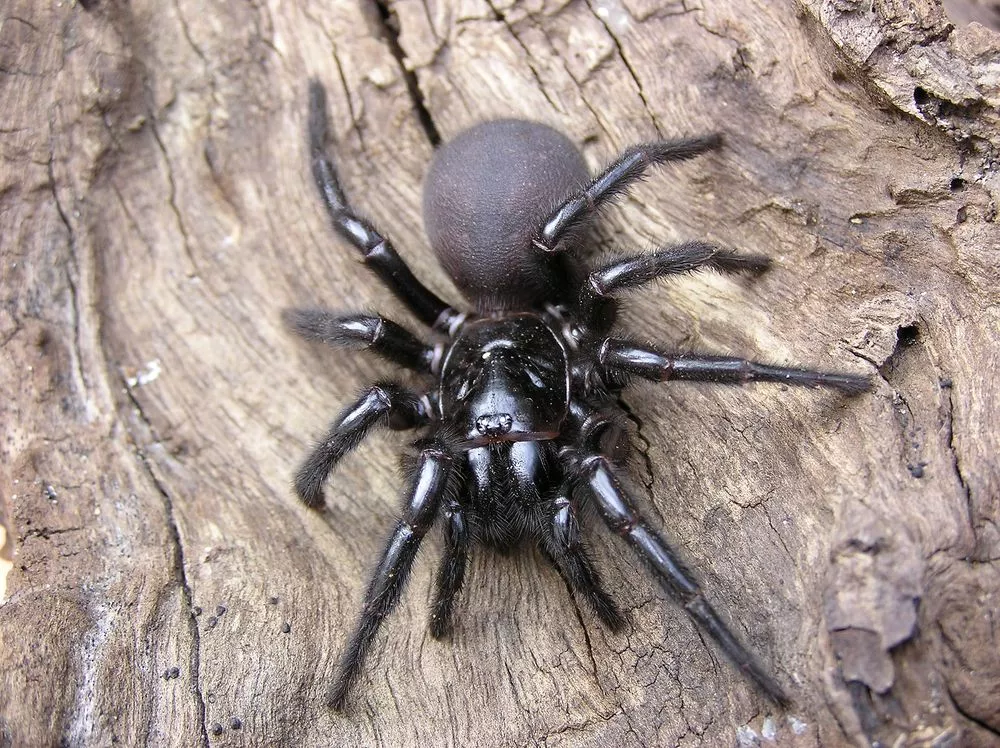
Some spiders flaunt their lethality with flashy colors or alien-like appendages, but few are as capable of following through on that promise as the glossy black Sydney Funnel-Web Spider. A funnel-web's bite is a serious cause for alarm: Fatality among adults can occur within 30 minutes, since the atraxotoxin in their venom causes the human nervous system to short out. (Interestingly, their venom is not particularly bothersome to non-primate mammals, including household pets.) What makes funnel-webs especially dangerous is their proximity to humans, and the natural behavior that drives them to seek shelter and build webs in sheltered burrows, like shoes and lawn ornaments. Aggressive to begin with, and prone to wandering, funnel-webs, fangs can pierce a human fingernail or even a shoe, which they will do repeatedly when threatened. The bite of a funnel-web is so fearsome that doctors recommend seeking antivenom after tangoing with any black spider in the funnel-web family, just in case.
Where to find them: The eastern and southern coasts of mainland Australia, plus Tasmania
9. Stonefish
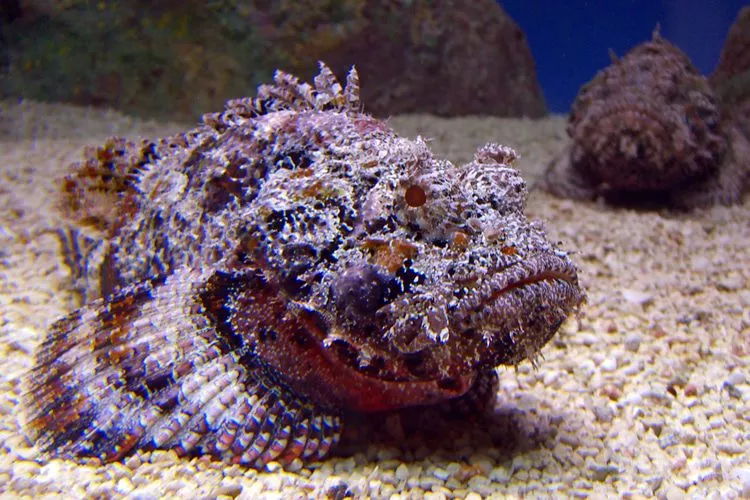
The most venomous fish known to humans is an easy one to miss, which is exactly what it wants. Stonefish, after all, are named for their visual similarity to rocks, sitting perfectly still and blending right into the seabed where an unsuspecting foot can easily step down on their dorsal fins, primed and ready with potent neurotoxins. The unluckiest clodhoppers will step hard, applying more pressure and increasing the amount of venom that gets injected; they may also trigger the stonefish's secondary defense mechanism known as a lachrymal saber, which has been likened to a switchblade of the face. Fatality from stonefish venom can occur within an hour, so it's recommended to seek antivenom immediately, applying water heated to over 113°F (45 °C) in the meantime to denature the venom. Most importantly, watch where you step.
Where to find them: Coastal Indo-Pacific Ocean, The Red Sea, and the Great Barrier Reef
10. Tsetse Fly

Often regarded as the world's most dangerous fly, the tsetse fly, a small speck of insect that measures between 8 to 17 mm, or about the same size as the average house fly, is commonly found in Sub-Saharan Africa, especially throughout countries in the center of the continent. While the flies themselves are nasty bloodsucking bugs that usually feed during the peak warm hours, their true terror lies in the protozoan parasites they spread known as Trypanosomes. These microscopic pathogens are the causative agent of African Sleeping Sickness, a disease marked by neurological and meningoencephalitic symptoms including behavioral changes, poor coordination, as well as the disturbances in sleeping cycles that give the illness its name. If untreated, the condition can be fatal. While there are no vaccines or medications available to prevent infection, methods of protection include wearing neutral-colored clothing (the tsetse fly is attracted to bright and dark colors, especially blue), avoiding bushes during the day, and using permethrin-treated gear in more remote areas.
Where to find them: The Sudans, the Democratic Republic of the Congo, and Angola
You might not think of these cuddly bears as being deadly, but wait until you read what they can do. Inside you'll find some other truly scary creatures, from things so small you'll barely see them to ones so big you can't miss them (but you'll wish you did). Most don't kill very many humans, but they can be incredibly ferocious predators in the wild, and each demands our respect. Editor's Note: This list, originally published in 2005, was updated in March 2016 to reflect the latest information. The list of bugs, beasts and lethal animals of several kinds, however, hasn't changed one iota.
1. Cape Buffalo

Cape buffalo, which number around 900,000, are a relatively mild species when left alone, preferring to travel in massive herds to graze in early morning and late afternoon hours, or to gather around watering holes to stay hydrated. However, if an individual (or its calf) is threatened or wounded, they become the incarnation of their nickname: Black Death. Reportedly responsible for killing more hunters on the continent than any other creature, these behemoths, which can grow up to nearly six feet tall and weigh close to a ton, circle and stalk their prey before charging at speeds of up to 35 miles per hour. They're even known to continue charging no matter where they're injured and will not hesitate to attack moving vehicles. Suffice to say, you don't want to mess with those horns. Where to find them: Sub-Saharan Africa, including Kruger National Park in South Africa
2. Cone Snail

Found in the warm waters in the tropics, these beautiful creatures, instantly recognizable for their highly prized brown-and-white marbled shells, can be seen in shallow depths closer to shore, near coral reefs and rock formations, and beneath sandy shoals. But do not dare to touch the 4- to 6-inch long gastropods: Their concealed, harpoon-like 'teeth' contain a complex venom known as a conotoxin, making them one of the most venomous species of snails. Only a handful of people ever stung, but, quite unfortunately, there is no antivenom. The toxin stops nerve cells from communicating with one another; so the creature not only causes paralysis within moments, but, per its nickname of "cigarette snail," affords you about enough time to smoke a stick before you die. Where to find them: The Caribbean, Hawaii, and Indonesia
3. Golden Poison Dart Frog

The poison dart is a large, diverse group of brightly colored frogs, of which only a handful of species are particularly dangerous to humans. The most deadly, the golden poison dart, inhabits the small range of rain forests along Colombia's Pacific coast, and grows to around two inches long (roughly the size of a paper clip). Its poison, called batrachotoxin, is so potent that there's enough in one frog to kill ten grown men, with only two micrograms, roughly the amount that would fit onto the head of a pin, needed to kill a single individual. But what makes the amphibian especially dangerous is that its poison glands are located beneath its skin, meaning a mere touch will cause trouble. Little wonder the indigenous Ember, people have laced the tips of their blow darts used for hunting with the frog's toxin for centuries. Sadly, deforestation has landed the frog on several endangered lists, but even if you do have a rare sighting when hiking, don't go reaching for it. Where to find them: Northern South America
4. Box Jellyfish

Often found floating (or slowly moving at speeds close to five miles per hour) in Indo-Pacific waters, these transparent, nearly invisible invertebrates are considered by the National Oceanic and Atmospheric Administration as the most venomous marine animal in the world. Their namesake cubic frames contain up to 15 tentacles at the corners, with each growing as much as 10 feet long, all lined with thousands of stinging cells, known as nematocysts, that contain toxins that simultaneously attack the heart, nervous system, and skin cells. While antivenoms do exist, the venom is so potent and overwhelming that many human victims, of the hundreds of reported fatal encounters each year, have been known to go into shock and drown or die of heart failure before reaching shore. Even if you are lucky enough to make it to the hospital and receive the antidote, survivors can sometimes experience considerable pain for weeks afterward, and bear nasty scars from the creature's tentacles. Where to find them: Off the northern coast of Australia
5. Indian Saw-Scaled Viper

While plenty of snake species pack enough venom to easily bring down a human, not all of them take the multifaceted approach of the Indian saw-scaled viper, which is why they are one of the top contributors to snakebite cases. Sometimes called the little Indian viper or simply the saw-scaled viper, these reptiles live in some of the most populated regions of the range they occupy, which stretches well beyond India. They remain inconspicuous by using their natural camouflage to blend into desert surrounds. Because they are typically active at night, it's best to listen for their defensive sizzling sound; this comes from a behavior called stridulation, in which the snake forms coils and rubs its scales together. Even with a warning, saw-scaled vipers are extremely aggressive, with more than double a lethal dose into each bite. (Luckily, there is an effective antivenom.) Where to find them: Parts of the Middle East, Central Asia, and the Indian subcontinent
6. Pufferfish

Pufferfish, also known as blowfish, are located in tropical seas around the globe. Though they're the second most poisonous vertebrate on the planet (after the golden arrow dart frog), they're arguably more dangerous as their neurotoxin (called tetrodotoxin) is found in the fish's skin, muscle tissue, liver, kidneys, and gonads, all of which must be avoided when preparing the creature for human consumption. Indeed, while wild encounters are certainly dangerous, the risk of death from a pufferfish increases when eating it in countries like Japan, where it is considered a delicacy known as fugu and can only be prepared by trained, licensed chefs, even then, accidental deaths from ingestion occur several times each year. The tetrodotoxin is up to 1,200 times more poisonous than that of cyanide, and can cause deadening of the tongue and lips, dizziness, vomiting, arrhythmia, difficulty breathing, muscle paralysis, and, if left untreated, death. Where to find them: Around Japan, China, and the Philippines
7. Black Mamba

Though species like the boomslang or the king cobra are dangerous thanks to their respective poisons, the black mamba is especially deadly due to its speed. The species (which can grow up to 14 feet long) is the fastest of all snakes, slithering at speeds of up to 12.5 miles per hour, which makes escaping one in remote areas that much more difficult. Thankfully, black mambas usually only strike when threatened, but when they do, they'll bite repeatedly, delivering enough venom (a blend of neuro- and cardiotoxins) in a single bite to kill ten people. And if one doesn't receive the correlative antivenom within 20 minutes, the bites are almost 100 percent fatal. Where to find them: The savannas and rocky areas of southern and eastern Africa
8. Sydney Funnel-Web Spider

Some spiders flaunt their lethality with flashy colors or alien-like appendages, but few are as capable of following through on that promise as the glossy black Sydney Funnel-Web Spider. A funnel-web's bite is a serious cause for alarm: Fatality among adults can occur within 30 minutes, since the atraxotoxin in their venom causes the human nervous system to short out. (Interestingly, their venom is not particularly bothersome to non-primate mammals, including household pets.) What makes funnel-webs especially dangerous is their proximity to humans, and the natural behavior that drives them to seek shelter and build webs in sheltered burrows, like shoes and lawn ornaments. Aggressive to begin with, and prone to wandering, funnel-webs, fangs can pierce a human fingernail or even a shoe, which they will do repeatedly when threatened. The bite of a funnel-web is so fearsome that doctors recommend seeking antivenom after tangoing with any black spider in the funnel-web family, just in case. Where to find them: The eastern and southern coasts of mainland Australia, plus Tasmania
9. Stonefish

The most venomous fish known to humans is an easy one to miss, which is exactly what it wants. Stonefish, after all, are named for their visual similarity to rocks, sitting perfectly still and blending right into the seabed where an unsuspecting foot can easily step down on their dorsal fins, primed and ready with potent neurotoxins. The unluckiest clodhoppers will step hard, applying more pressure and increasing the amount of venom that gets injected; they may also trigger the stonefish's secondary defense mechanism known as a lachrymal saber, which has been likened to a switchblade of the face. Fatality from stonefish venom can occur within an hour, so it's recommended to seek antivenom immediately, applying water heated to over 113°F (45 °C) in the meantime to denature the venom. Most importantly, watch where you step. Where to find them: Coastal Indo-Pacific Ocean, The Red Sea, and the Great Barrier Reef
10. Tsetse Fly

Often regarded as the world's most dangerous fly, the tsetse fly, a small speck of insect that measures between 8 to 17 mm, or about the same size as the average house fly, is commonly found in Sub-Saharan Africa, especially throughout countries in the center of the continent. While the flies themselves are nasty bloodsucking bugs that usually feed during the peak warm hours, their true terror lies in the protozoan parasites they spread known as Trypanosomes. These microscopic pathogens are the causative agent of African Sleeping Sickness, a disease marked by neurological and meningoencephalitic symptoms including behavioral changes, poor coordination, as well as the disturbances in sleeping cycles that give the illness its name. If untreated, the condition can be fatal. While there are no vaccines or medications available to prevent infection, methods of protection include wearing neutral-colored clothing (the tsetse fly is attracted to bright and dark colors, especially blue), avoiding bushes during the day, and using permethrin-treated gear in more remote areas. Where to find them: The Sudans, the Democratic Republic of the Congo, and Angola


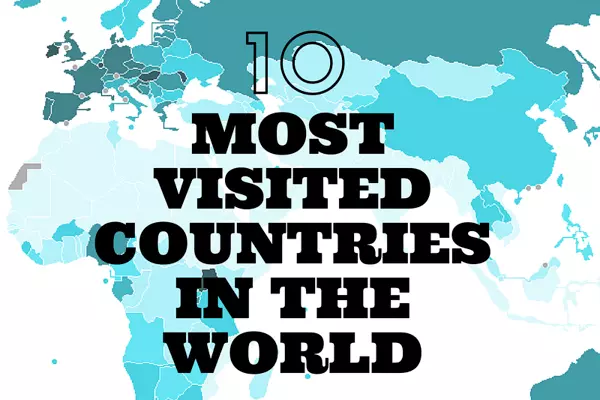

















Login to your account or create a new account to post comments!